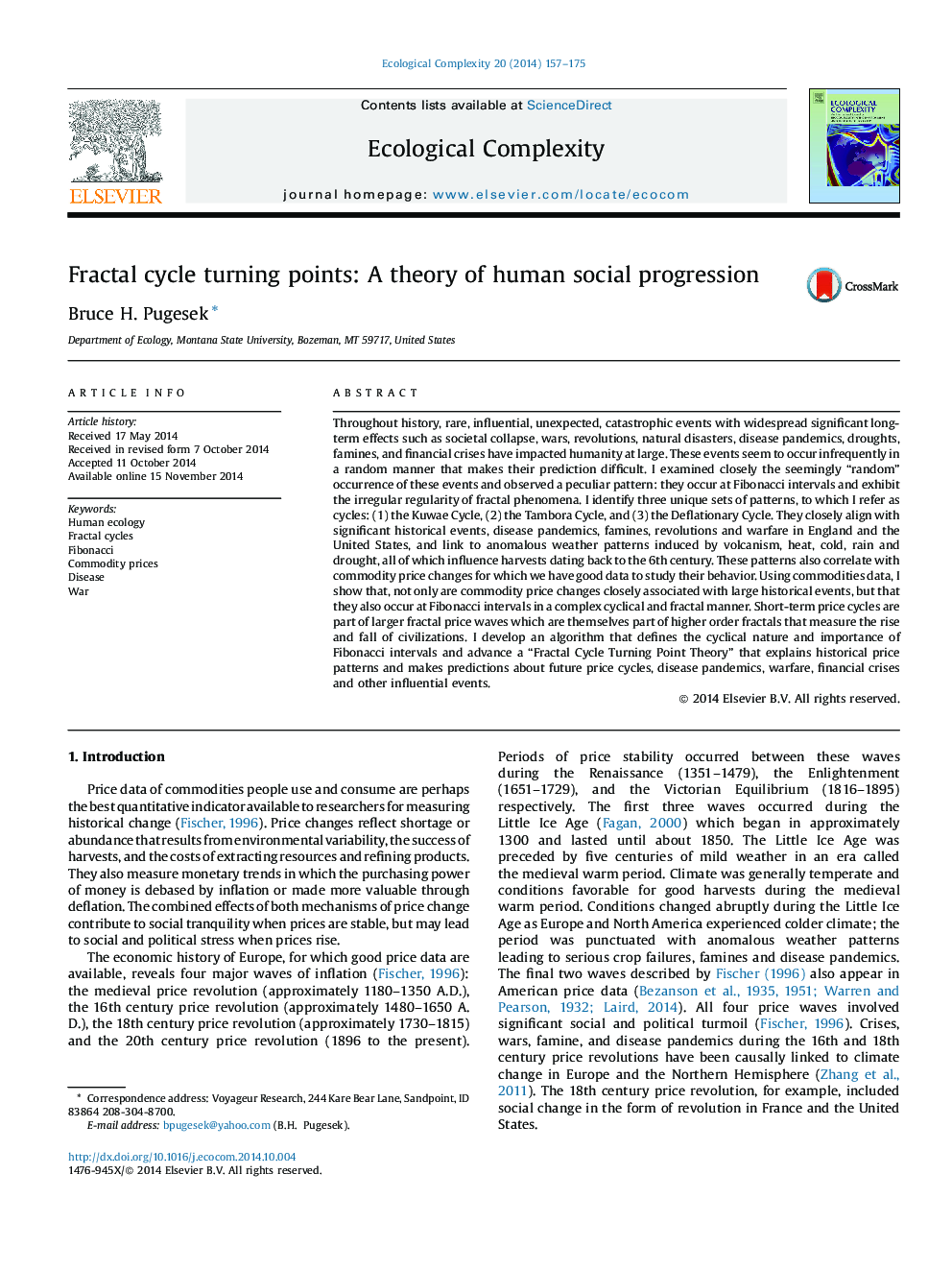| Article ID | Journal | Published Year | Pages | File Type |
|---|---|---|---|---|
| 4372366 | Ecological Complexity | 2014 | 19 Pages |
Abstract
Throughout history, rare, influential, unexpected, catastrophic events with widespread significant long-term effects such as societal collapse, wars, revolutions, natural disasters, disease pandemics, droughts, famines, and financial crises have impacted humanity at large. These events seem to occur infrequently in a random manner that makes their prediction difficult. I examined closely the seemingly “random” occurrence of these events and observed a peculiar pattern: they occur at Fibonacci intervals and exhibit the irregular regularity of fractal phenomena. I identify three unique sets of patterns, to which I refer as cycles: (1) the Kuwae Cycle, (2) the Tambora Cycle, and (3) the Deflationary Cycle. They closely align with significant historical events, disease pandemics, famines, revolutions and warfare in England and the United States, and link to anomalous weather patterns induced by volcanism, heat, cold, rain and drought, all of which influence harvests dating back to the 6th century. These patterns also correlate with commodity price changes for which we have good data to study their behavior. Using commodities data, I show that, not only are commodity price changes closely associated with large historical events, but that they also occur at Fibonacci intervals in a complex cyclical and fractal manner. Short-term price cycles are part of larger fractal price waves which are themselves part of higher order fractals that measure the rise and fall of civilizations. I develop an algorithm that defines the cyclical nature and importance of Fibonacci intervals and advance a “Fractal Cycle Turning Point Theory” that explains historical price patterns and makes predictions about future price cycles, disease pandemics, warfare, financial crises and other influential events.
Related Topics
Life Sciences
Agricultural and Biological Sciences
Ecology, Evolution, Behavior and Systematics
Authors
Bruce H. Pugesek,
